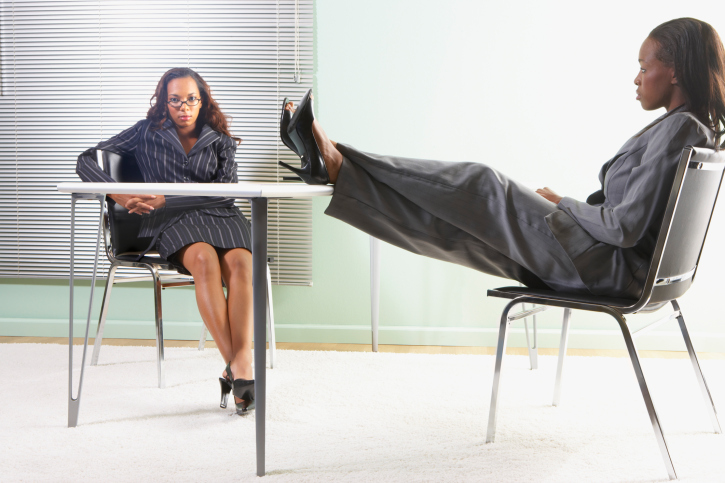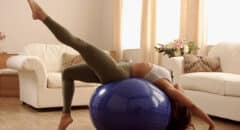 Do you sit at a desk most of the day? Do you drive a lot? You've likely already heard the reports on how too much sitting can be bad for your health - increasing your risk for obesity, diabetes, and heart disease. However, you may not have heard about what experts call 'dead butt syndrome.' If you spend a large chunk of time sitting or don't work your booty muscles enough, you could be putting yourself at risk.
Do you sit at a desk most of the day? Do you drive a lot? You've likely already heard the reports on how too much sitting can be bad for your health - increasing your risk for obesity, diabetes, and heart disease. However, you may not have heard about what experts call 'dead butt syndrome.' If you spend a large chunk of time sitting or don't work your booty muscles enough, you could be putting yourself at risk.
According to Andrew Bang, a chiropractor at the Cleveland Clinic's Wellness Institute, dead butt syndrome isn't uncommon. "I see the injury all the time in varying degrees," Bang told Health.com.
Also, known as gluteal amnesia or gluteus medius tendinosis, this literal pain-in-the-butt occurs when the gluteus medius, one of the three major muscles in the rump, stops firing correctly. This can lead to inflammation, lower back, hip, and even joint pain, as the body tries to compensate for the imbalance.
Health.com explained:
Do YOU have 'Dead Butt Syndrome'?
So, how do you know if you suffer from dead butt syndrome? One way doctors determine whether you suffer from gluteal amnesia is with the Trendelenburg test. During this standing exam, practitioners assess hip stability by having patients lift one leg in front of them. If the pelvis on the side of the body where the leg is lifted dips down, this signals weakness in the glutes on the opposite side.
The curve in a person's back can also be very telling. The lower back should form an 'S' shape in its natural stare. If the curvature is more extreme this could indicate the hip flexors are pulling the spine forward, Bang said.
Fortunately for sufferers, there are several simple moves you can implement into your daily routine to bring those butt muscles back to life!
Bridge Exercise or back bend
Lie on your back, with your eyes up at the ceiling. Keep your arms at your sides. Lift your hips towards the ceiling while pulling your belly button toward your spine to engage the transverse muscles. Keep your knees and thighs parallel and hold the pose for 5 full breaths. Release back to the start position. Perform 3 to 5 reps of 10 lifts for best results.
WATCH: How to Work Legs & Booty...In a Chair!
Squats
Stand with your feet slightly wider than your hips. Point your toes slightly outward – about 5 to 20 degrees. Look straight ahead while focusing on a figure or the wall in front of you. Concentrate on this focal point the entire time you squat, ensuring not to look down at the floor or up at the ceiling. With your weight on your heels and the balls of your feet, take a deep breath and push your hip and butt back, keeping your back straight and your chest and shoulders up. Squat down until your hips and knees are parallel. Return to standing position. Do 3 sets of 10 to 15 movements.
Standing on one leg
Believe it or not, standing on one leg – practicing keeping your balance -- is a great way to fire up the gluteal muscles. Perform on each side for one minute.
What else helps combat dead butt syndrome?
- Keep moving at work and take standing breaks.
- Massage that targets the gluteal muscles can also alleviate spasms and decrease severe pain.
- Take Ibuprofen for persistent pain, throughout the day, for a short period as suggested by a doctor.
- Acupuncture at least twice a week for three weeks may also combat pain.









